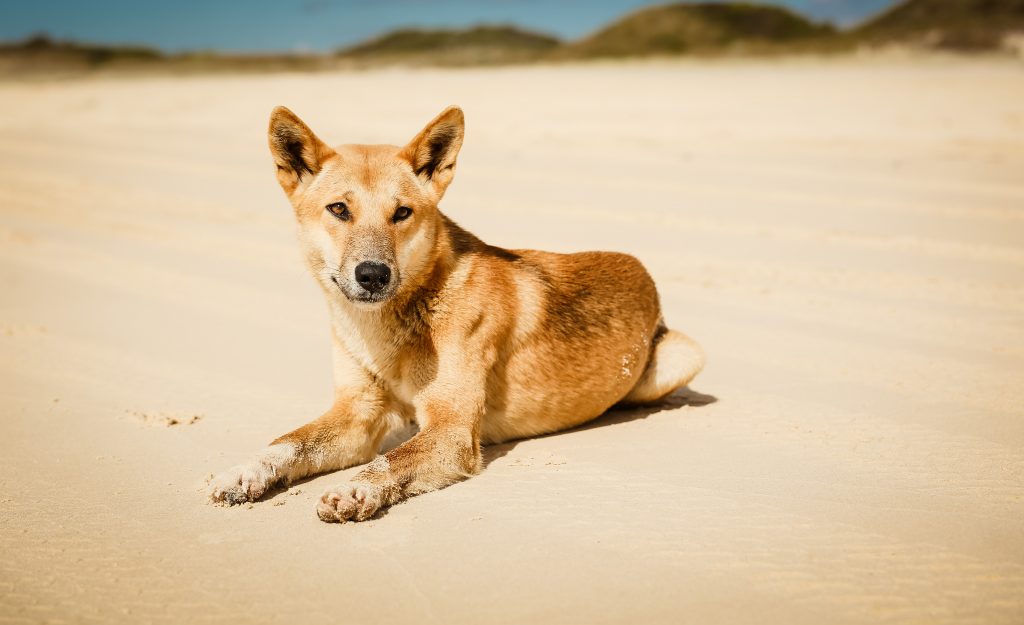Dingoes once had a pretty bad reputation. They have been feared and demonised in equal measure, by people and governments with little understanding of the dingo’s nature and behaviour. Shocking stories such as that of Azaria Chamberlain, the baby daughter of Lindy and Michael Chamberlain, whose disappearance in the Northern Territory back in 1980 was attributed to a dingo, went a long way to associating dingoes with danger and risk.
How to stay safe around dingoes on K’gari
Thankfully times have changed and the dingo is now seen as the precious, unique dog that it is and one that deserves our respect and protection. Among their many attributes is their position at the top of the food chain which ensures the populations of other island species are kept in check, a balancing act vital to the health of K’gari’s eco system.
When there are so many threats to the natural environment of K’gari, the dingo is a vital ally in its protection and future.
Are dingoes inherently aggressive?
As you might imagine, this is a poplar question on every Fraser Island Tour and the simple answer is, no. A dingo will not actively seek you out just to attack you. Far from it. In fact a dingo is much more likely to scamper away than approach you, so attacks on people are relatively rare. But that isn’t to say there are no safety risks associated with the dingo. The inquisitive, curious nature of the dingo can sometimes lead to potentially dangerous human/dingo interactions.

Why would a dingo become dangerous?
Your chances of having a dangerous encounter with a dingo is greatly increased in those areas where dingoes have become habituated to humans through feeding. And sadly there are areas of K’gari where this is the case. In the past it was relatively common, though always discouraged, for some visitors to the island to feed dingoes and encourage them to approach, mostly to get a good picture or just see them more closely. This has inevitably led to certain dingo populations associating people with food. And this is where a lot of the dangers around dingo/human interaction stem from.
What can you do to protect both yourself and the dingo?
Apart from keeping a respectful distance if you do see a dingo, there are five main points to remember:
- Always carry a dingo stick outside of fenced areas, and walk in pairs. Just in case you encounter a dingo while outside camp.
- Never feed dingoes or encourage them to come towards you. Leave them in peace if you do see them.
- Never run along the beach. Dingoes have an instinct to chase and doing this could result in a dingo chasing after you.
- Always keep food locked away. Food is a BIG draw for dingoes.
Give them space, K’gari is their place. Remember we are all just visitors to their island. Give them the space and respect they deserve.
Written by Kate Moxhay at katemoxhay.com

